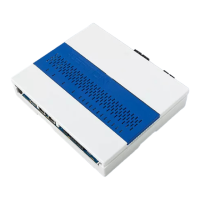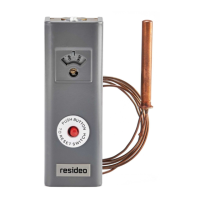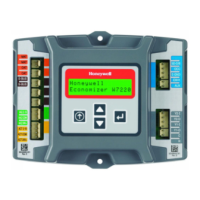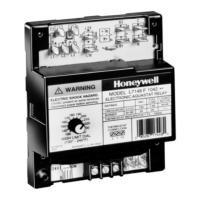
Do you have a question about the Honeywell Mini-AT and is the answer not in the manual?
| Brand | Honeywell |
|---|---|
| Model | Mini-AT |
| Category | Controller |
| Language | English |
Details on how the Mini-AT measures input volume.
Specifies the pressure transducer types and ranges for input pressure.
Describes the temperature sensor and its operational range.
Defines how corrected volume is calculated and displayed.
Lists the power requirements and battery life specifications.
Details on pulse output configurations for data collection.
Information on audit trail, event log, and alarm log memory capacities.
Specifies the maximum error at reference conditions.
Details the impact of ambient temperature on accuracy.
Specifies the long-term stability of the device's measurements.
Lists the operational ambient temperature and humidity ranges.
Describes the materials and construction of the Mini-AT enclosure.
Lists the safety certifications for the device.
Illustrates the main board with labeled connections and jumpers.
Details the purpose of each connector and jumper on the Mini-AT board.
Explains the calculation of the pressure factor for volume correction.
Describes the calculation of the temperature factor for volume correction.
Details the supercompressibility factor and its role in volume correction.
Details how the Mini-AT receives input from the meter's drive shaft.
Describes the primary pressure sensing system and its connections.
Details the temperature sensing system and its probe.
Explains the correction applied for gas compressibility.
Describes the functionality of the LCD display and scrolling through readings.
Explains 'wake-up' cycles and how they affect measurement and pulse output.
Steps to perform a functional check after receiving the instrument.
Procedure to check the gauge pressure transducer's accuracy.
Procedure to check the absolute pressure transducer's accuracy.
Steps to verify the accuracy of the temperature sensor.
Procedure to verify the corrected volume reading and scaling.
How to configure the Mini-AT to match meter rotation direction.
Wiring details for connecting low frequency pulse inputs using the RSI board.
Details on installing and configuring the High Frequency Input Board (HFIB).
Information on using HFI software for meter scaling calculations.
Using HFI software to test pulse generator accuracy.
Step-by-step guide for installing batteries in the alkaline receptacle pack.
Instructions for replacing disposable battery packs.
Describes how the LCD displays serial link status and diagnostic information.
Details the Mini-AT's capability to initiate modem calls for alarms or schedules.
Procedure for manually clearing alarms using the mag wand or software.
Describes the instrument's state when battery voltage is critically low.
Steps to configure the Mini-AT for Form-A volume pulse output.
Instructions for configuring the Mini-AT for Form-C volume pulse output.
Details the default operational mode and its functions.
Explains how meter readers access data without opening the door.
Describes access level for calibration and limited parameter changes.
Details access level for full instrument configuration and calibration.
Defines and outlines the procedure for calibrating pressure transducers.
Defines and outlines the procedure for single-point pressure calibration.
Defines and outlines the procedure for calibrating temperature sensors.
Defines and outlines the procedure for single-point temperature calibration.
Configures the jumper for flash memory access override.
Configures the jumper to force the instrument to factory default settings.
Controls access for uploading newer firmware into flash memory.
Manages two-way serial communication and baud rate settings.
Hardware requirement to lock the Event Logger through software.
Steps to save instrument data before performing a firmware upgrade.
Steps to restore instrument configuration after a firmware upgrade.
Specific control measures for device isolation and network security.
Recommendations for securing communication with remote MDM hosts.
Best practices for managing access credentials and passwords.











